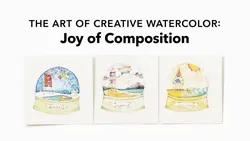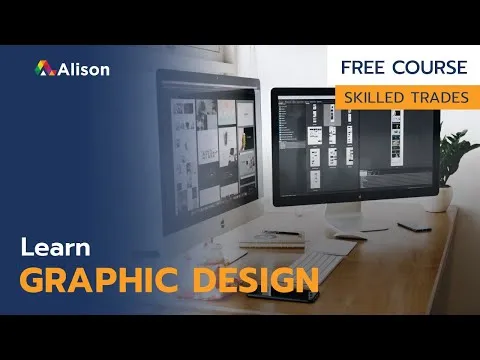
Typography Critique Week 1 - One Weight One Pt Size - Designing with Limitations 
This week's Typography Critique focused on designing with limitations, using one weight and one point size. The top five elements of good typography were discussed, followed by a critique of how increasing the space can create more interesting and dynamic contrast. Additionally, the group explored how to create a focal point and order by aligning things to an axis, as well as pushing the letterforms to create a more dynamic composition. ▼
ADVERTISEMENT
Course Feature
![]() Cost:
Cost:
Free
![]() Provider:
Provider:
Youtube
![]() Certificate:
Certificate:
Paid Certification
![]() Language:
Language:
English
![]() Start Date:
Start Date:
On-Demand
Course Overview
❗The content presented here is sourced directly from Youtube platform. For comprehensive course details, including enrollment information, simply click on the 'Go to class' link on our website.
Updated in [February 21st, 2023]
This week's Typography Critique course will focus on designing with limitations. Students will learn the top 5 elements of good typography, as well as how to critique their own layouts. They will explore different sizes and weights, but only one size and weight per layout. They will also learn how to create separation between two groups that are in all caps, the 1/3 rule, and the Fibonacci sequence. Additionally, they will learn how to make a focal point, push the letters off the edges, and view the design as a floor plan. Finally, they will learn how to use the Architecture plug in from Hot Door CAD Tools.
[Applications]
The application of this course can be seen in the use of typography in design. After completing this course, participants should be able to identify the top 5 elements of good typography, critique their own layouts, and explore different sizes and weights while using only one size and weight per layout. Additionally, participants should be able to use grids, the Fibonacci sequence, and the 1/3 rule to create separation between two groups that are in all caps. Finally, participants should be able to view the design as a floor plan and use the Architecture plug in from Hot Door CAD Tools.
[Career Paths]
1. Graphic Designer: Graphic designers create visual concepts, using computer software or by hand, to communicate ideas that inspire, inform, and captivate consumers. They develop the overall layout and production design for various applications such as advertisements, brochures, magazines, and corporate reports. Developing trends in this field include the use of 3D and animation software, as well as the use of virtual reality and augmented reality to create immersive experiences.
2. Typographer: Typographers are responsible for designing and arranging typefaces to create visually appealing and legible designs. They must have a strong understanding of the principles of design, typography, and layout, as well as an eye for detail. Developing trends in this field include the use of digital tools to create custom typefaces, as well as the use of motion graphics to create dynamic typography.
3. UX/UI Designer: UX/UI designers are responsible for creating user-friendly interfaces for websites and applications. They must have a strong understanding of user experience principles, as well as an eye for detail. Developing trends in this field include the use of artificial intelligence and machine learning to create more intuitive user experiences, as well as the use of motion graphics to create dynamic interfaces.
4. Web Developer: Web developers are responsible for creating and maintaining websites and web applications. They must have a strong understanding of coding languages, as well as an eye for detail. Developing trends in this field include the use of artificial intelligence and machine learning to create more dynamic websites, as well as the use of motion graphics to create interactive experiences.
[Education Paths]
1. Bachelor of Arts in Graphic Design: This degree program focuses on the fundamentals of graphic design, such as typography, layout, color theory, and digital imaging. It also covers topics such as branding, advertising, and web design. Students learn how to create effective visual communication through the use of type, images, and other design elements. This degree is becoming increasingly popular as more businesses and organizations rely on graphic design to communicate their message.
2. Master of Fine Arts in Graphic Design: This degree program is designed for those who want to pursue a career in graphic design. It focuses on advanced topics such as typography, layout, color theory, and digital imaging. Students learn how to create effective visual communication through the use of type, images, and other design elements. This degree is becoming increasingly popular as more businesses and organizations rely on graphic design to communicate their message.
3. Bachelor of Science in Computer Science: This degree program focuses on the fundamentals of computer science, such as programming, algorithms, data structures, and software engineering. It also covers topics such as artificial intelligence, machine learning, and computer graphics. Students learn how to create effective software applications and systems that can be used to solve real-world problems. This degree is becoming increasingly popular as more businesses and organizations rely on computer science to develop their products and services.
4. Master of Science in Human-Computer Interaction: This degree program focuses on the fundamentals of human-computer interaction, such as user experience design, user interface design, and usability testing. It also covers topics such as artificial intelligence, machine learning, and computer graphics. Students learn how to create effective user interfaces and experiences that can be used to solve real-world problems. This degree is becoming increasingly popular as more businesses and organizations rely on human-computer interaction to develop their products and services.
Course Provider

Provider Youtube's Stats at AZClass
Discussion and Reviews
0.0 (Based on 0 reviews)
Explore Similar Online Courses

Service Mesh with Istio

The Art of Creative Watercolor: Joy of Composition

Python for Informatics: Exploring Information

Social Network Analysis

Introduction to Systematic Review and Meta-Analysis

The Analytics Edge

DCO042 - Python For Informatics

Causal Diagrams: Draw Your Assumptions Before Your Conclusions

Whole genome sequencing of bacterial genomes - tools and applications

Complete Graphic Design Course Explaining Psychology (MUST KNOW)

Graphic Design Tutorial For Beginners Graphic Design (Full Course)


Start your review of Typography Critique Week 1 - One Weight One Pt Size - Designing with Limitations